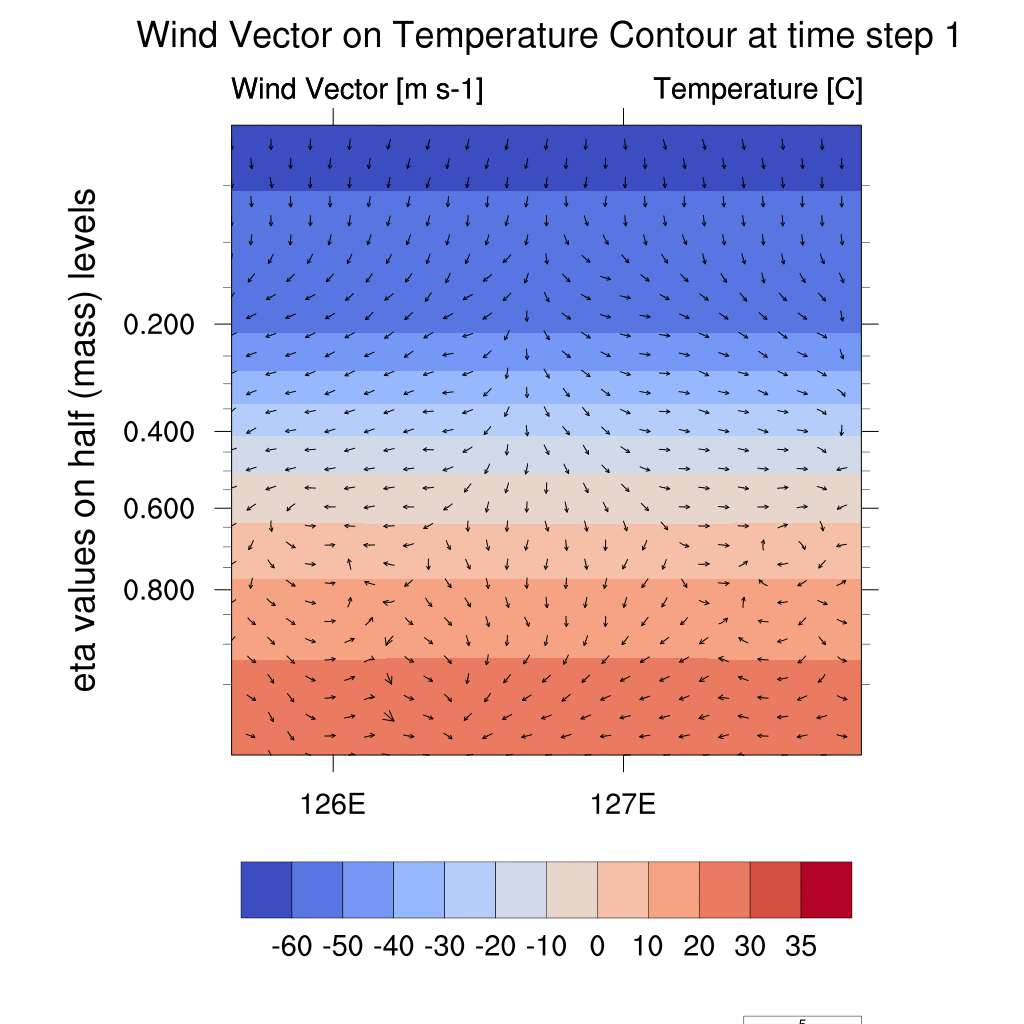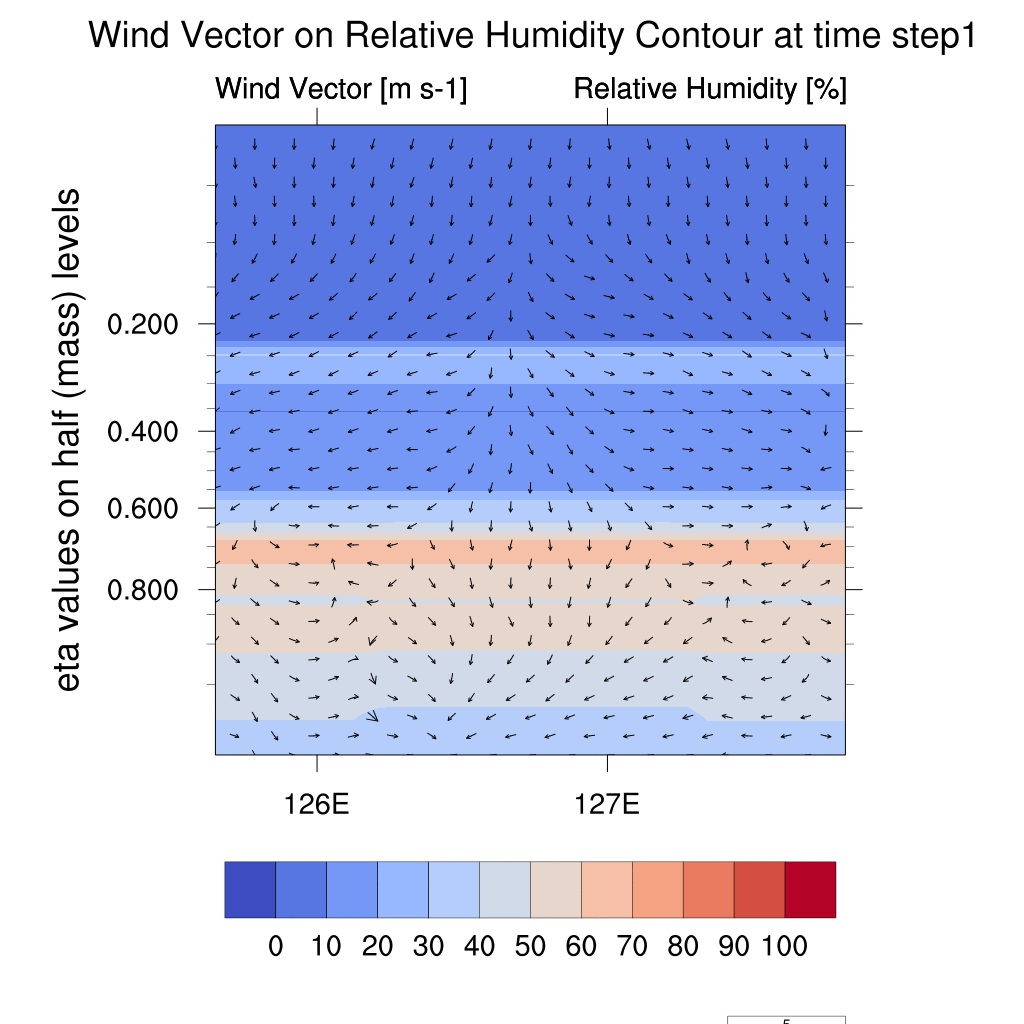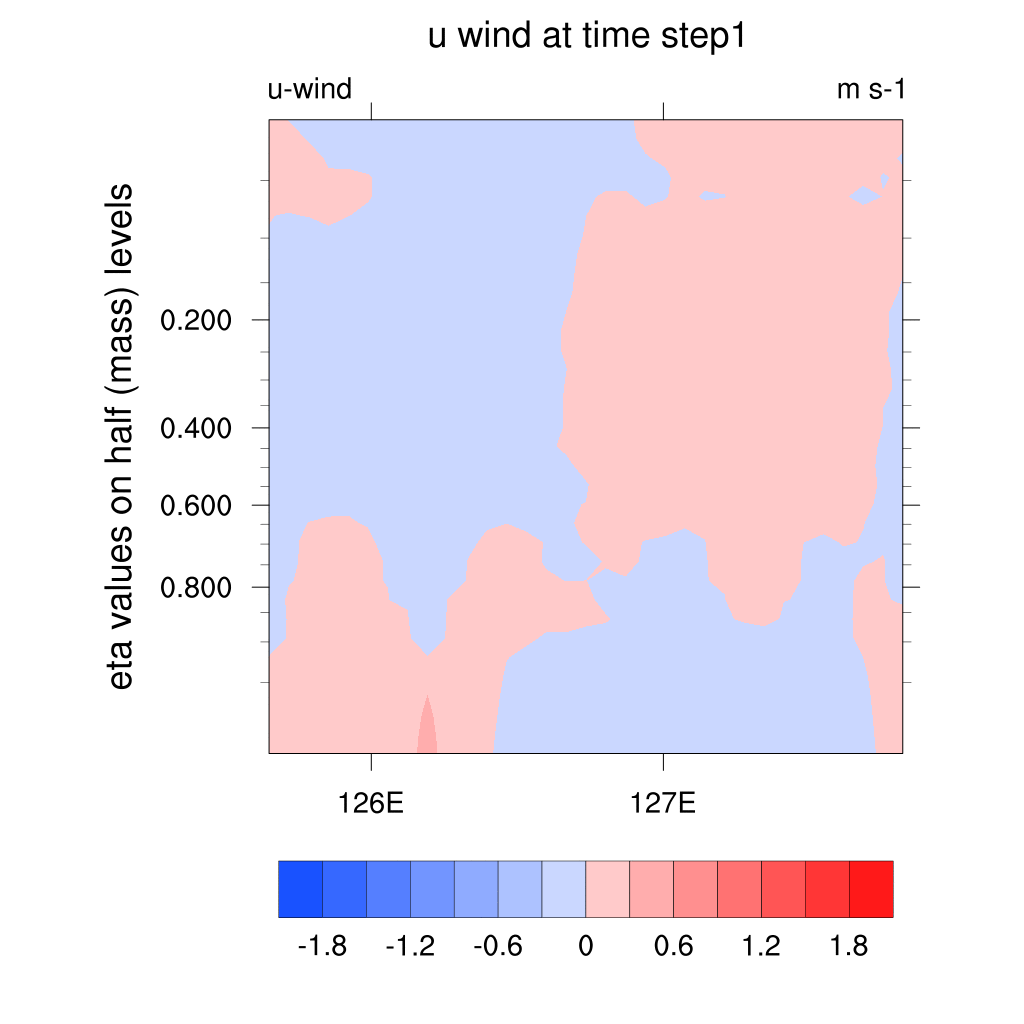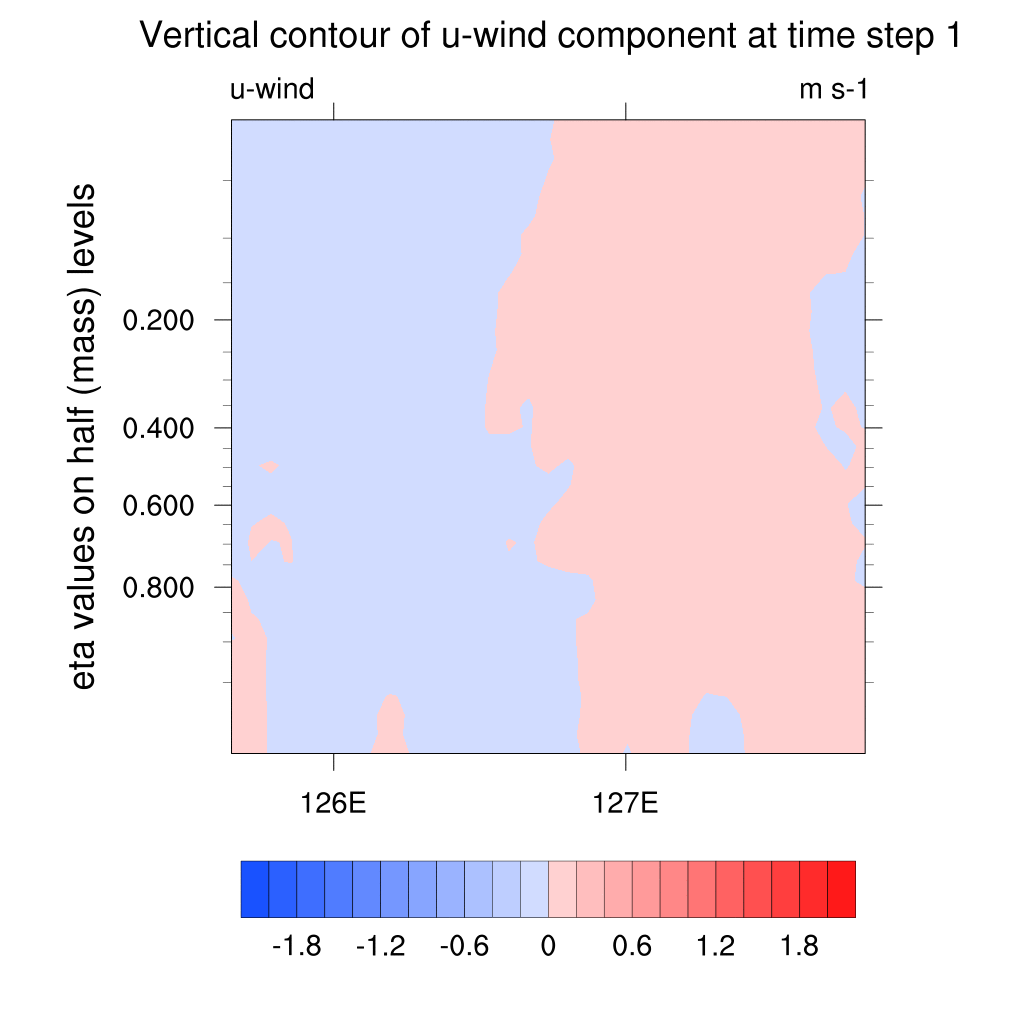: Focused on temperature and humidity change
1. Temperature Contour Analysis
Mixing Ratio = 5g/kg (Dry Condition)

The temperature difference between the urban and the rural area becomes relatively less distinct.
-
Since water vapor has a high heat capacity and plays an important role in temperature change, a decrease in the amount of water vapor in the air reduces the atmosphere's ability to absorb and store heat during the day, resulting in a less noticeable temperature increase.
-
Conversely, at night, as the surface cools, the low water vapor content limits heat retention. This causes gradual cooling instead of rapid cooling, thereby reducing temperature fluctuations.
Mixing Ratio = 10g/kg (DEFAULT Case)

The urban area maintains a higher temperature than the rural area.
-
Particularly from midnight to just before sunrise, the temperature difference between the city and rural area reaches its peak, making the urban heat island effect most pronounced.
-
During the day, solar radiation increases the temperature in both the urban and rural area, but the temperature difference becomes less noticeable compared to nighttime. This is because the heat accumulated in the city during the day is slowly released at night and into the early morning. As a result, the urban temperature doesn’t drop as quickly as it does in the rural area.
Mixing Ratio = 15g/kg (Humid Condition)

The temperature difference between urban and rural area becomes more pronounced.
-
With a high mixing ratio, the combination of high temperature and abundant moisture in urban area leads to increased heat accumulation. Since water vapor has a high heat capacity, it stores more energy when heat is retained, which can significantly raise surface temperature.
-
In the rural area, a higher mixing ratio ensures sufficient moisture for evapotranspiration, which absorbs heat and helps to suppress temperature increases.
2. Relative Humidity Analysis
Mixing Ratio = 5g/kg (Dry Condition)

Due to the low moisture content in the air, the relative humidity difference between urban and rural area is not very pronounced.
-
Even if temperature drops, the air does not easily reach saturation. With limited moisture in the air, both urban and rural area maintain low relative humidity levels, despite temperature difference, resulting in a minimal relative humidity difference. As a result, the urban heat island effect has a relatively weak influence on relative humidity under these conditions.
Mixing Ratio = 10g/kg (DEFAULT Case)

The relative humidity in the urban area is lower than in the rural area.
-
The city maintains a relatively higher temperature than the rural area, which requires the air to hold more moisture, thereby lowering the relative humidity.
-
In contrast, the rural area has a cooler temperature and is rich in vegetation and water, promoting active evapotranspiration. This process supplies moisture to the rural area, and the lower temperature brings the air closer to its dew point, resulting in higher relative humidity.
Meanwhile, the relative humidity in the upper atmosphere shows an opposite trend compared to the surface.
-
During the pre-dawn hours, warm air rises from the surface and moves to cooler upper layers above. This movement makes it easier for air to reach saturation and significantly increase relative humidity. As a result, the difference in relative humidity between the urban and rural area becomes more noticeable at higher altitude.
Mixing Ratio = 15g/kg (Humid Condition)

The amount of water vapor in the air increases, causing the relative humidity to rise overall in both urban and rural areas.
-
In the rural area, the temperature cools more rapidly overnight, leading to very high relative humidity levels close to saturation.
-
In the urban area, the relative humidity remains lower than in the rural area. However, since there is still plenty of moisture in the air, it exhibits higher relative humidity compared to the previous cases.
3. Surface Temperature Analysis
Mixing Ratio = 5g/kg (Dry Condition)

The surface temperature difference between the urban and rural area becomes smaller.
-
This is because less water vapor in the air limits heat accumulation and release in the atmosphere. As a result, neither the urban area nor the rural area can store enough heat during the day. This reduces the temperature increase in the city and limits the temperature rise in the countryside, narrowing the temperature difference between them.
Mixing Ratio = 10g/kg (DEFAULT Case)

In the urban area, heat accumulates during the day, causing the temperature to rise more quickly. And at night, less heat is released, leading to a slower decrease in temperature.
-
During the day, the temperature increases in both the urban and rural area, with the urban temperature rising faster. However, in the evening, the rural area cools rapidly while the city retains a higher temperature, intensifying the heat island effect.
Mixing Ratio = 15g/kg (Humid Condition)

During the day, the temperature difference between the city and rural area remains relatively small, around 2–3 degrees. After midnight, the temperature gap between the city and rural area increases sharply.
-
At around 1 a.m., the temperature difference reaches its peak, with the surface temperature in the urban area approximately 14 degrees higher than that in the rural area. This illustrates a significant temperature difference due to the disparity in cooling rates.
4. U- wind Analysis
Mixing Ratio = 5g/kg (Dry Condition)

A distinct horizontal wind flow is observed between urban and rural areas.
-
The limited moisture in the air makes it denser. While temperature differences between urban and rural areas may not be significant, even small temperature differences under dry atmospheric conditions can create strong pressure gradients. These pressure differences react sensitively to even minor temperature variations, providing the driving force for horizontal winds between the two areas.
Mixing Ratio = 10g/kg (DEFAULT Case)

During the day, the urban area accumulates heat from solar radiation. After sunset, this stored heat is released, causing warm air to rise and spread toward the surrounding rural area.
-
At night, the urban heat island effect keeps the city’s temperature relatively high, while the rural area cools down more quickly. This results in cold air moving from the rural area into the city, creating a converging wind pattern.
Mixing Ratio = 15g/kg (Humid Condition)

Horizontal wind flow between urban and rural areas appears less distinct.
-
Due to the increased moisture in the air, the atmosphere becomes denser and more stable, which limits air movement. Consequently, even though there is a temperature difference between urban and rural areas, air movement is less active, weakening the wind flow.